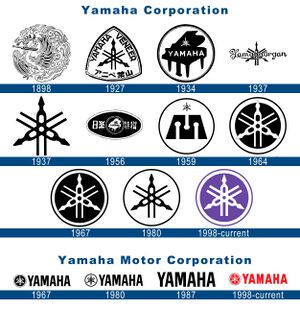Yamaha
Yamaha is one of the oldest corporations in the world, founded in 1897 by entrepreneur Torakusu Yamaha. The history of Thorakusu Yamaha's work with musical instruments began in 1887, when a man asked him, a medical instrument repairman who lived at that time in the city of Hamamatsu (Shizuoka Prefecture), to repair the reed organ (harmonium). Working with this instrument so fascinated him that after the completion of the repair he decided to create his own harmonium sample. Based on the knowledge about the structure of this musical instrument, gained during the repair process, he began to manually make every detail. Two months later, he delivered the finished organ on his own for testing at the Institute for Music Research in Tokyo (now the Tokyo National University of Fine Arts and Music). The institute's specialists admitted that the instrument has the correct body shape, however, they identified a number of shortcomings, including instability of tuning. Not succumbing to disappointment, Thorakusu Yamaha decided to stay in Tokyo and achieve his goal by studying music theory and tuning methods, becoming a special listener at the Institute for Music Research. After a month of intense study, Thorakusu Yamaha returned to Hamamatsu, where he began to work from early morning until late evening, making his second reed organ. After a second check, his instrument was found "worthy of replacing imported counterparts."
These events took place in 1887, it was then that the master chose the vector for the development of the future business. In 1889, Thorakusu Yamaha founded the Yamaha Organ Works, and eight years later, in 1897, he created the Nippon Gakki company, whose symbol was the tuning forks and the trademark of the Chinese phoenix with a tuning fork in its beak. In the same years, the company received its first order for the export of organs to Southeast Asia, and in 1900 released the first batch of pianos. In 1902, the production of the first grand pianos under the Yamaha brand began, and in 1904 the organ and upright pianos from the company received the Grand Prix at the World Exhibition in the American city of St. Louis. The success of the company in woodworking was also noted.
In 1914, Nippon Gakki, under the Yamaha brand, began producing harmonicas and began exporting in the same year. Success accompanied the company in all its endeavors. In 1921, the Japanese government decided to use Nippon Gakki's woodworking expertise to create aircraft propellers. In 1922, under the Yamaha brand, the production of high-quality phonographs began, in 1930 the first acoustic analysis laboratory was founded, in 1932 the production of wind organs was mastered, and since 1941 the production of acoustic guitars. The company was able to quickly and efficiently redesign its production. So metalworking technologies were in demand for casting frames for pianos and pianos, and later in the production of wind instruments.
After World War II, the owners of Nippon Gakki thought about reorienting the company to produce more demanded products, for example, modern vehicles with a motor. The new direction of development became possible thanks to the purely personal data of the new head of Yamaha - Genichi Kawakami. Ambitious goals and creativity have characterized this period of Yamaha's history.
Genichi was the eldest son of Kaichi Kawakami, the company's third president. Genichi joined the company in 1937 and soon became head of one of its factories. He then took over as managing director, and in 1950, at the age of 39, became the fourth president of the company. Recalling the creation of Yamaha Motor, Genichi Kawakami said: “Although the company performed well and had good financial performance, I understood that we needed to find new areas of activity. I did some research to figure out what could be produced on the machines we had. So my thoughts got down to motorcycles. Although we entered this market later than others, my R&D manager and others have visited the country's leading motorcycle factories and convinced me that there is ample room for development in this market. I didn’t want to start this unfamiliar business without any preparation, so we went to German motorcycle factories before developing our first 125cc motorcycle. ”
After several years of preparation, the company released its first motorcycle, the YA-1. This small model, equipped with a single-cylinder 125-cc two-stroke engine, was named "Red Dragonfly" and brought its creators an overwhelming success. The management of the company decided in 1955 to found a subsidiary company, which became involved in the production of motorcycles - Yamaha Motor. Thus Yamaha Motor Co., Ltd. was born. led by founding president Genichi Kawakami.
Yamaha motorcycles
![]()

